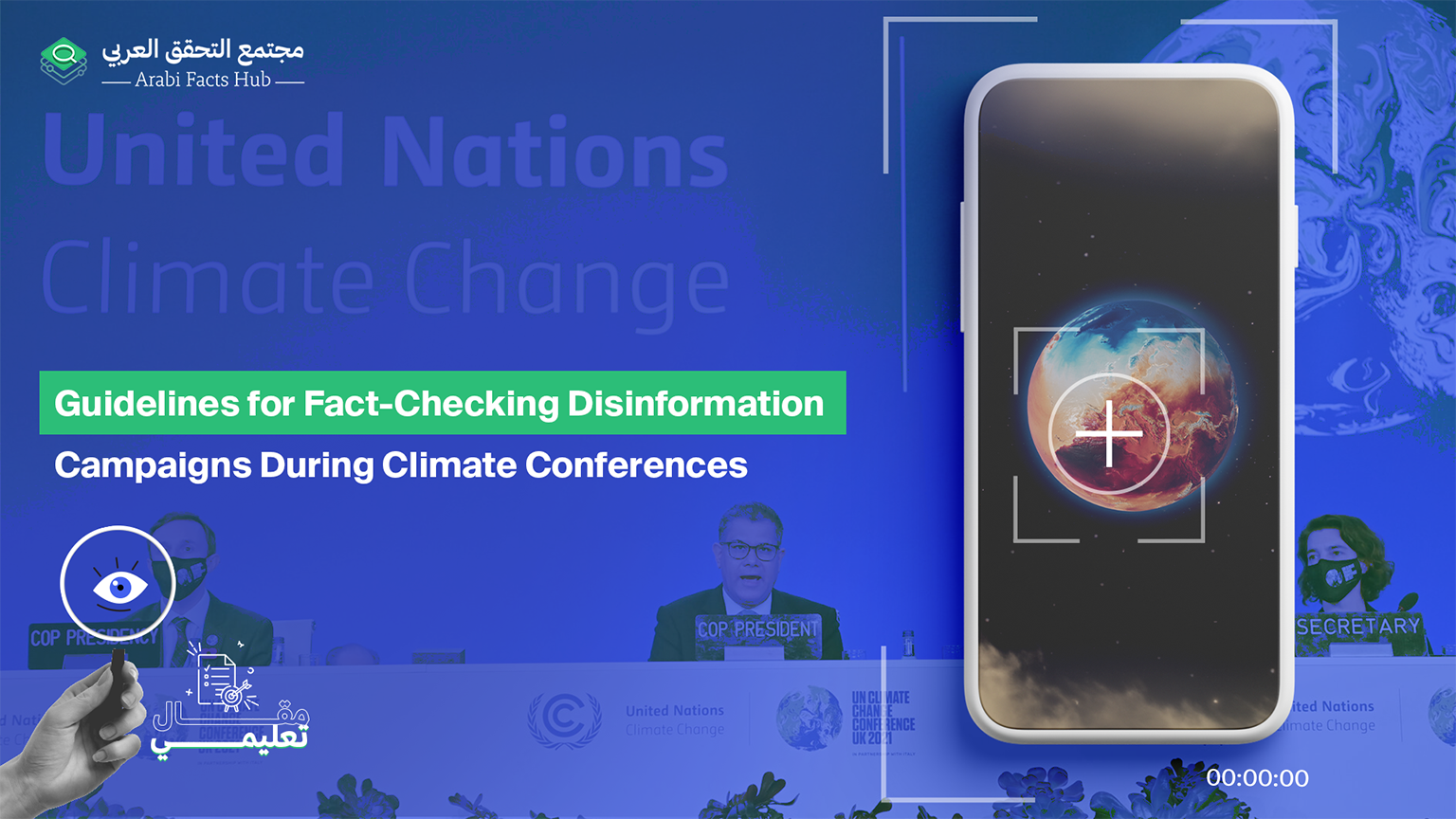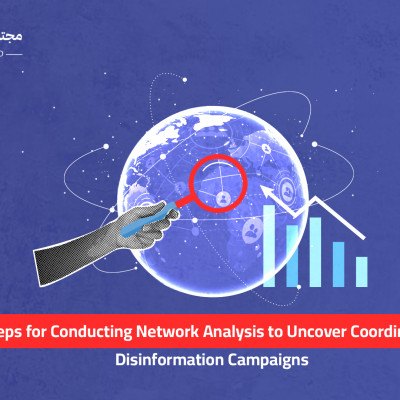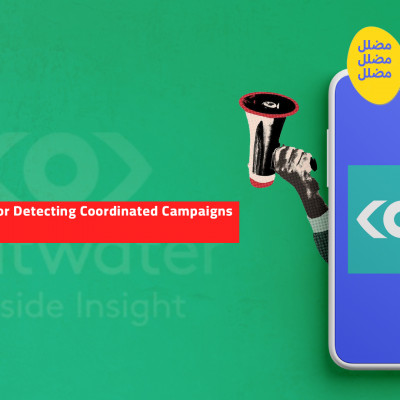Guidelines for Fact-Checking Disinformation Campaigns During Climate Conferences

Climate Disinformation
Climate misinformation poses an increasing threat to efforts to combat climate change, as disinformation weakens individuals' tendencies to adopt more environmentally responsible practices and hinders governments' commitment to climate action policies. The spread of climate misinformation often intensifies in conjunction with the sessions of the Conference of the Parties (COP).
This article presents a methodology for journalists and fact-checkers to help them counter the misinformation flooding conventional and social media platforms during COP sessions. Additionally, it highlights a range of tools that can be employed to gather credible information.
What is Climate-Related Disinformation?
Climate-related disinformation refers to the intentional dissemination of false information about climate change. The European Union defines it as a deliberate attempt to mislead the public, encompassing a range of narratives from outright denial of climate change to promoting conspiracy theories and distorting facts by claiming that climate change is not human-induced or not as serious as scientists assert, thereby undermining the urgency for action. The United Nations highlights another form of disinformation known as "greenwashing," where companies or governments promote false solutions to climate change to divert attention from substantive, effective measures.
Why Combating Climate Disinformation During Climate Summits is a Priority?
The proliferation of climate disinformation at the backdrop of international climate conferences has evolved into a deliberate, coordinated effort rather than a coincidental occurrence. These campaigns aim to influence the policies, decisions, and even agendas of conferences, posing a significant obstacle to global climate action.
A New York Times report on COP28 held in the UAE in 2023, pointed to the role of internet influencers, fossil fuel companies, and some participating countries in promoting climate change denial and misleading narratives. According to the report, this disinformation undermined public pressure for decisive action to prevent catastrophic climate outcomes and fueled hate speech against climate activists, complicating efforts to address the global climate crisis.
The Climate Action Against Disinformation (CAAD) coalition released a report during COP28 highlighting the efforts of fossil fuel lobbyists and state-backed actors who work to obstruct climate policies. It presented case studies examining their online campaigns, networks, and tactics used to promote disinformation.
According to Rahma Diaa, founder of the Climate School initiative, the rise of disinformation during climate summits is a response to intensified pressure by climate advocates demanding radical actions like phasing out fossil fuels and climate justice funding. These demands often face resistance from economic and commercial circles due to their financial and policy implications.
Notable Reports Exposing Climate Disinformation at Summits
CAAD coalition's report “Robo-COP29: Bots Boosted Propaganda Promoting Petrostate Host” exposed thousands of fake accounts that promoted Azerbaijan, the host of that year’s summit, as a climate champion. Another report, “Deny, Deceive, Delay: New Trends in Climate Disinformation at COP27”, documented fossil fuel companies spending $4 million on misleading ads on Meta’s platform during the 2022 climate conference in Egypt. These findings emphasize the growing sophistication of disinformation strategies aimed at derailing global climate action.
A Methodology for Fact-Checking Coordinated Climate Disinformation Campaigns
First we need to monitor content shared on social media platforms and analyze user activity to detect any misleading information. This includes observing account behavior to determine whether it is organic or artificially driven, which aids in understanding the dynamics of content dissemination and verifying its authenticity
“
First we need to monitor content shared on social media platforms and analyze user activity to detect any misleading information. This includes observing account behavior to determine whether it is organic or artificially driven, which aids in understanding the dynamics of content dissemination and verifying its authenticity.
Additionally, tracking and verifying official statements is crucial, including fact-checking claims made by politicians, ministers, presidents, and other public figures regarding climate change. For instance, the “Ozone” platform has fact-checked several misleading statements by Trump on climate change, revealing logical fallacies, confusing terms, and delays in climate action.
News websites are another potential source of climate-related misinformation. Most errors stem from a lack of deep understanding of climate terminology.
Sponsored advertisements also play a significant role in spreading climate disinformation. Therefore, examining paid ads on platforms like Meta, X (formerly Twitter), and TikTok that contain climate-related content is necessary.
Using these sources can uncover misinformation categorized under the “Five Techniques of Science Denial”:
- Fake Experts: Presenting unqualified individuals or organizations as credible authorities.
- Logical Fallacies: Offering arguments based on flawed logic.
- Impossible Expectations: Demanding unrealistic standards before any climate action is taken.
- Conspiracy Theories: Claiming secret plots with malicious intentions.
- Cherry-Picking Data: Selecting data that supports a particular stance while ignoring contradictory evidence.
Tips for Fact-Checking Disinformation Claims During Climate Conferences
Rahma Diaa, an award-winning journalist and founder of the Climate School initiative, offers several tips for journalists and fact-checkers when addressing climate-related claims:
- Avoid making accusations without definitive evidence to prevent legal repercussions.
- Present the claim in a separate paragraph at the beginning of the report, using a subheading to clearly indicate that the claim is misleading to prevent reader confusion.
- Investigate key questions: Who is behind the spread of these claims? What are their motives and interests? How can the validity of these claims be confirmed?
- Rely on evidence, research studies, and trusted data sources.
- Refer to reports from regulatory bodies and watchdog websites that expose environmental violations.
- Search existing fact-checking sites for prior analyses that may have already addressed the claim.
- Consult researchers, scientists, and specialists in the relevant field for informed answers and rebuttals.
- Use simple language and explain any technical terms that might be difficult for a general audience to understand.
- Incorporate visuals such as images, charts, maps, and explanatory videos in fact-checking reports.
- Conclude with a summary paragraph highlighting the key findings.
Open Sources for Fact-Checking Climate Information
Open-source tools provide invaluable resources for accessing climate data and monitoring environmental changes, including: Sentinel Hub, Google Earth Pro, Global Forest Watch, Fire Dynamic Map.
“
Open-source tools provide invaluable resources for accessing climate data and monitoring environmental changes, including:
- Satellite imagery tools like Sentinel Hub, Google Earth Pro, and the Fire Dynamic Map.
- Global Forest Watch provides data on vegetation loss worldwide. The report “Egypt Buries Its Lungs Under Concrete” from Zawya Talta (Third Angle) used Global Forest Watch to document deforestation.
- SkyTruth tracks air pollution and gas flaring emissions from oil extraction sites.
The Open Source Toolkit and guides like OSINT’s Open Source Intelligence Tools and Resources Handbook also offer resources for climate-related inquiries. Blincat’s Toolkit provides a comprehensive set of open-source tools.
The Climate Justice Investigative Guide by ARIJ provides numerous tools and ethical guidelines for the use of open-source tools in climate investigations and exposing climate-related disinformation. This includes tools for measuring vegetation cover, tracking the erosion of green spaces, assessing air pollution levels, and evaluating pollution from gas flares associated with oil extraction. Additionally, it features tools to verify water availability, assess flood risks, and natural disasters, enhancing the ability to document and verify environmental impacts.*
Climate Databases Available for Use
In addition to open-source tools, several websites and specialized databases can be utilized to obtain reliable, well-documented climate information.
- Climate Feedback, part of Science Feedback, offers science-based analyses of climate and health issues, which makes it a good resource for weeding out disinformation.
- Ask NASA Climate is a NASA tool for verifying climate-related misinformation.
- Greenwashing Index tracks effective climate change mitigation practices and environmental preservation strategies.
- Climate Watch provides open-source data and analyses, offering insights into countries' progress in addressing climate change.
- The Natural Resources Defense Council (NRDC), in collaboration with the Climate and Clean Air Coalition (CCAC), has a collection of scientific facts about climate.
- The Climate Knowledge Base, provided by the Climate and Strategy Foundation, is a free database containing scientific publications, reports, articles, and audio files on various climate issues.
- Climate Fact Checks highlights climate-related facts to counter misleading claims in the media.
- DeSmog publishes a list of climate experts for contact, providing reliable information to help debunk false claims.
Challenges in Detecting Climate Misinformation During Climate Conferences:
Collusion of Major Tech Companies
A New York Times report titled “Disinformation Is One of Climate Summit’s Biggest Challenges” revealed that some sites spreading false information generate significant profits from advertisements, making big tech indirectly complicit in promoting such content.
Diverse Forms of Climate Disinformation
Climate disinformation constantly adapts to new contexts, a phenomenon known as "shape-shifting." This ranges from denying science and promoting conspiracy theories about weakening economies to questioning the effectiveness and feasibility of proposed climate solutions, engaging in greenwashing, and misleading public opinion with fake climate-friendly policies adopted by governments or large corporations.
Challenges in Accessing Reliable Knowledge
Climate-related terminology is often difficult and complex for non-experts, creating verification challenges and the need to understand climate facts and strategies before analyzing and identifying disinformation.
Language Barriers
A significant challenge for journalists and fact-checkers in the Middle East and North Africa is that most credible, research-based sources are published predominantly in English rather than Arabic.
Technical Skills and Empowerment
Challenges arise when dealing with unstructured data that require reclassification, cleaning, and processing. Advanced technical tools, such as scraping or data extraction via APIs, demand specialized knowledge.
Financial Constraints
Many tools are prohibitively expensive, limiting access for independent journalists, fact-checkers, and smaller organizations or initiatives









